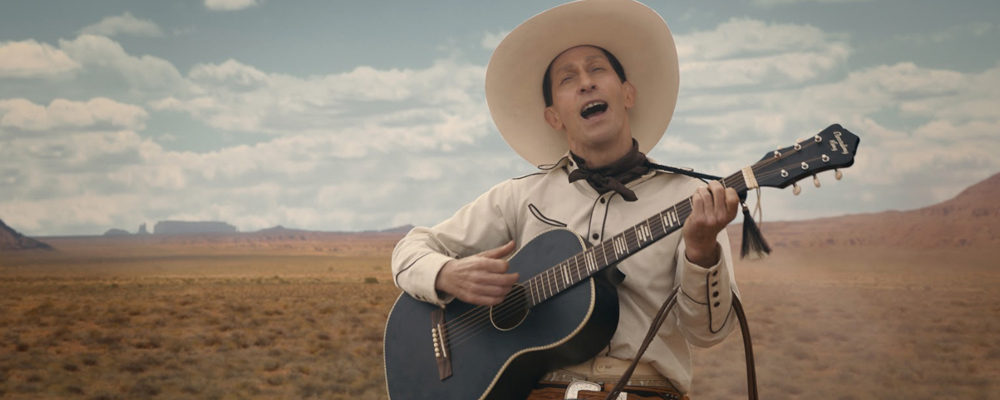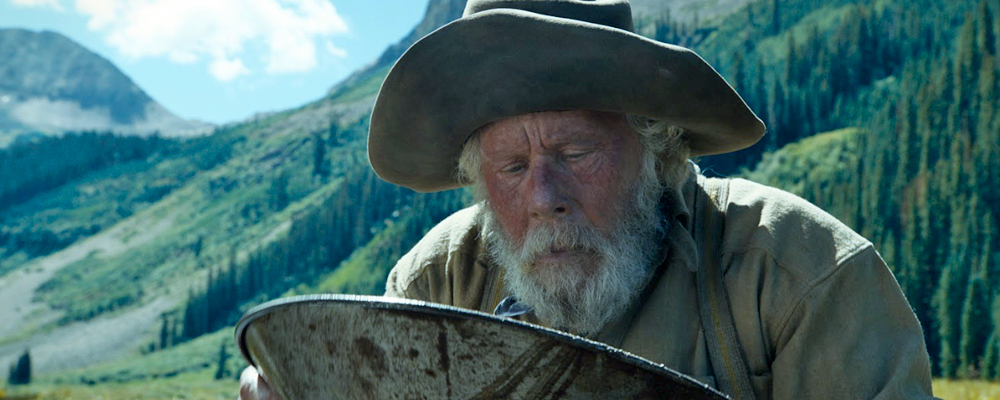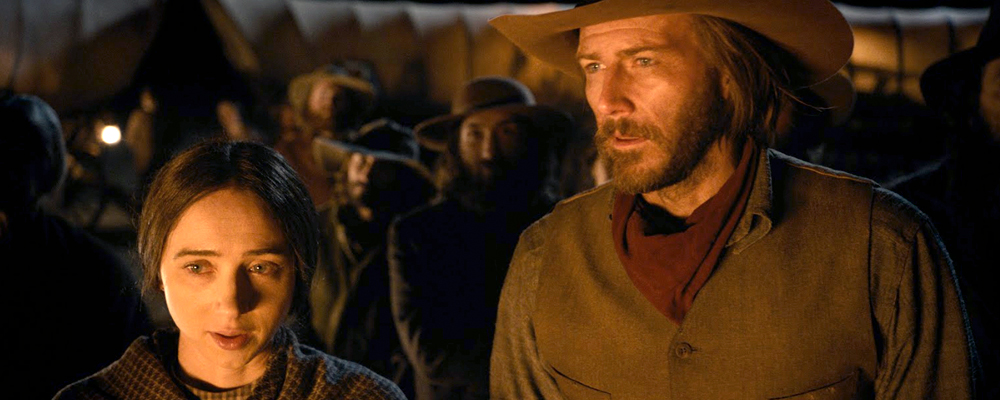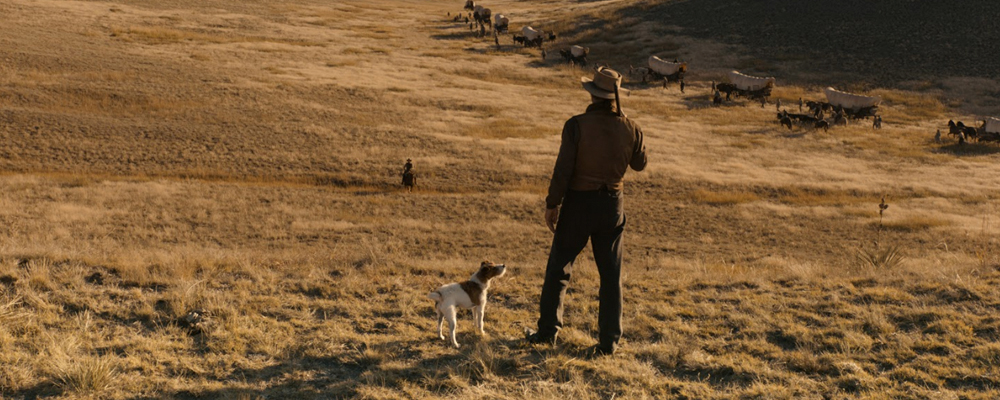The Coen Brothers Revise the Western With Darkly Funny ‘The Ballad of Buster Scruggs’
Alci Rengifo
There is something about the Old West that continues to fascinate Joel and Ethan Coen. Maybe it’s the idea of wide spaces as a theater for great tales. “The Ballad of Buster Scruggs” is a strange, wildly entertaining and even tender collection of short stories, all taking place in the 1800s, some having firm endings, others simply cutting away. The Coens have dabbled in the Western genre before, most notably with their 2007 Best Picture winner “No Country for Old Men” and their 2010 adaptation of “True Grit.” Those were more straightforward narratives. This one, their first with Netflix, is an anthology full of great human strangeness, reviving the genre while poking fun at its more traditional elements.
Six stories combine to make this film, each one in a different setting, with a different tone. Something about the West, whether it be its cruelty, violence or social norms is explored in each tale. A book opens during the first credits, and with each story the page will turn. Buster Scruggs (Tim Blake Nelson) opens the first story, singing as he makes his way into town, into a saloon and eventually into a classic duel. In the tale of “Near Algadones,” a thief simply known as the Cowboy (James Franco) faces frontier justice, while in “All Gold Canyon,” a desperate prospector (Tom Waits) desperately searches for gold. “Meal Ticket” looks at the cold truth about the traveling circus culture of the times, with an Impresario (Liam Neeson) traveling with an armless, legless reciter of prose (Harry Melling) until he finds a new attraction to sell. “The Gal Who Got Rattled” follows a young woman named Alice Longabaugh (Zoe Kazan) and her dog, President Pierce, on a wagon trail, presumably to meet a potential husband until things get turned upside down. In “The Mortal Remains” two bounty hunters, an Irishman (Brendan Gleeson) and Thigpen (Jonjo O’Neill), who rivet and terrify their passengers with descriptions of their line of work.
“The Ballad of Buster Scruggs” has a special kind of beauty in the way it combines classic Western aesthetic with the dark humor and quirky tones of the Coen Brothers. What they are doing here is taking ideas and romantic fantasies about the West, especially the ones nurtured through movies, and distorting them into something new, with a bit more truth. While the Coens are already a respected cinematic force, making this film with Netflix potentially gives them more freedom to indulge in their obsessions. The opening story is an offbeat and funny take on the idea of the gunslinger, using a few bloody moments (like someone’s fingers getting blown off), to mock the idealized concept of a showdown at noon. “All Gold Canyon” looks gorgeous, set in a picture-perfect valley where Tom Waits desperately digs for gold, until someone else decides to take aim at him. We first meet him by hearing him sing a tune in the open air as a deer’s ears perk up to the noise. If the Coens’s previous Westerns were about violent men and greed, “The Ballad of Buster Scruggs” also explores these themes, but with a satirical wink that can make it even more effective. In one of the more somber stories, “The Mortal Remains,” Liam Neeson’s impresario seems to be doing fine with his performer (Melling), but not for long, because there’s always a better deal just around the corner in a capitalist system. The ending is morbidly funny, but done with a subtle touch that makes us grin and wince at the same time. Few filmmakers know how to pull this off.
One of the virtuoso segments is “The Gal Who Got Rattled,” where the Coens combine their visual grandeur with their ear for dialogue in a way that balances tenderness with sudden, almost farcical tragedy. Alice Longabaugh, played with a gentle maturity by Zoe Kazan, finds herself alone when her brother Gilbert (Jefferson Mays) dies of a strange ailment during their wagon trail. Filmed with a visual beauty reminiscent of Terrence Malick’s “Days of Heaven,” the story seems to go for a traditional Western romance as one of the guides, Billy (Bill Heck) decides he might propose to Alice. Marriage in the 19th century, social status and the culture of frontier colonialism are all somehow condensed into rich prose and a climax involving an Indian war party that mocks with sly cynicism the countless cowboys versus Indians scenes from old Westerns. Even the old trick of giving the woman a gun with two bullets (“one for you, one for me”) is used with brutal, yet funny logic. For this film the Coens work with cinematographer Bruno Delbonnel, who also shot their “Inside Llewyn Davis,” and has filmed visual delights like “Amelie” for other directors. Delbonnel beautifully captures images that channel our fantasy notions of the West, which the Coens cheerfully tear apart.
In a sense the Coens are saying with their own, special voice that these are the roots of the United States. Human folly, violence and ambition drove much of the colonial enterprise that wiped out the Native Americans and established the country in terms of its social structures. “The Mortal Remains” is a Gothic take on the classic journey Westerns like “Stagecoach,” but with a truly dark edge as Thigpen and the Irishman rattle the sensibilities of their fellow occupants, describing the business of murder like a well-planned enterprise. They don’t even know what the dead man strapped to the roof of the coach did to deserve a price on his head. People have to make a living somehow.
Approach this film as you would a collection of fiction. Do not go into it expecting a plot threading through the whole thing. What is enjoyable about “The Ballad of Buster Scruggs” is how its stories say much about the West and about us with that Coen Brothers brand of merciless humor and visual creativity. The vistas are glorious, the humor is fun, but the darker shades of blood are all too real.
“The Ballad of Buster Scruggs” releases Nov. 16 in select theaters and Netflix.




